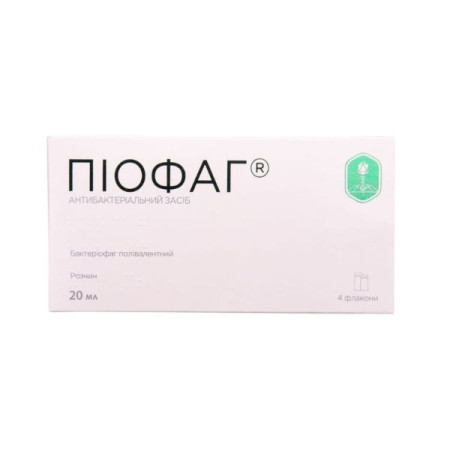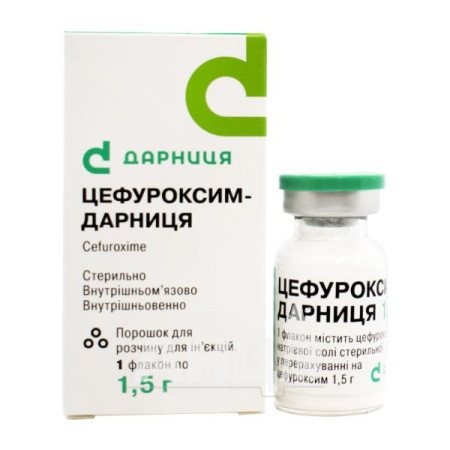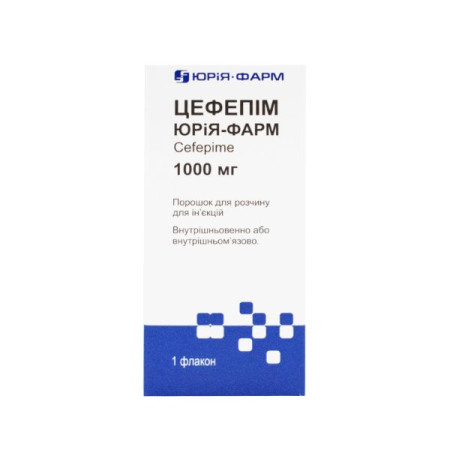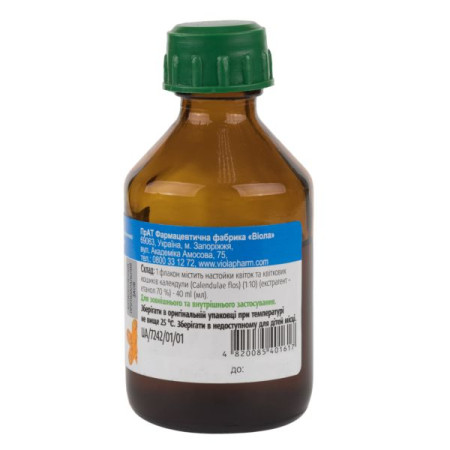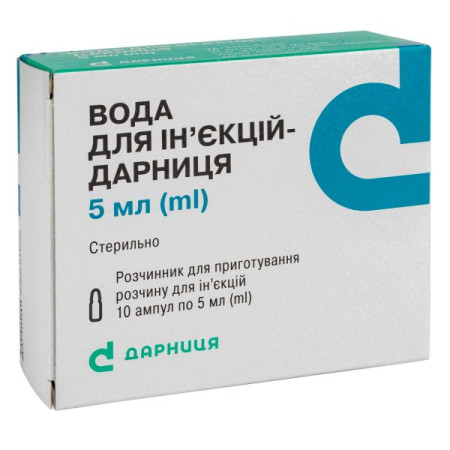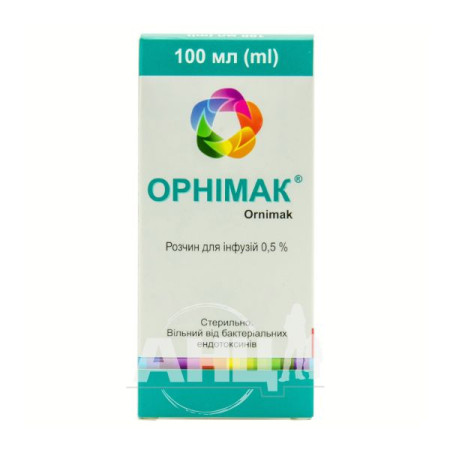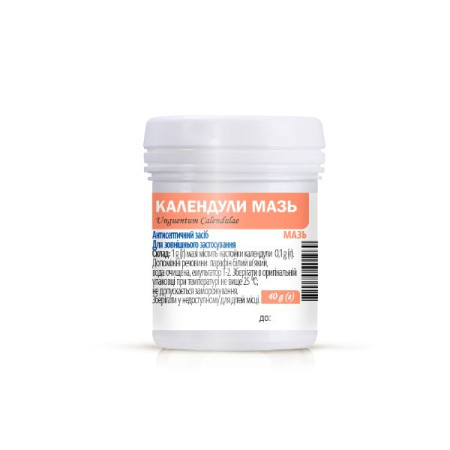Ilomedin concentrate for solution for infusion 20 mcg/ml ampoule 1 ml No. 5

Instructions for Ilomedin concentrate for solution for infusion 20 mcg/ml ampoule 1 ml No. 5
Composition
active ingredient: iloprost;
1 ml of solution contains 0.027 mg of iloprost trometamol, corresponding to 20 μg of iloprost;
Excipients: trometamol, ethanol 96%, sodium chloride, diluted hydrochloric acid, water for injections.
Dosage form
Concentrate for solution for infusion.
Main physicochemical properties: clear liquid, free from particles.
Pharmacotherapeutic group
Antiplatelet agents.
ATX code B01A C11.
Pharmacological properties
Pharmacodynamics
Iloprost is a synthetic analogue of prostacyclin, the pharmacological action of which is:
inhibition of platelet aggregation, adhesion and release reactions; dilation of arterioles and venules; increase in capillary density and decrease in increased vascular permeability in the microcirculation system; activation of endogenous fibrinolysis; inhibition of leukocyte adhesion after endothelial damage and accumulation of leukocytes in damaged tissue, as well as reduction in the release of free oxygen radicals.
The exact mechanism of action is not known.
Pharmacokinetics
Distribution
The equilibrium state between the administration and metabolic inactivation of iloprost (steady-state concentration) is reached 10-20 minutes after the start of the intravenous infusion. The equilibrium concentration in the blood plasma depends linearly on the dose of the drug administered per unit time. At a dosage of 3 ng/kg/min, a concentration of approximately 135 ± 24 pg/ml is achieved. After the end of the infusion, the concentration of iloprost in the blood plasma decreases very quickly (this is due to the high intensity of its metabolism). The metabolic clearance of the active substance from the blood plasma is approximately 20 ± 5 ml/kg/min. The half-life from the blood plasma in the terminal phase is 0.5 hours, as a result of which 2 hours after the end of the infusion the content of the active substance is less than 10% of the equilibrium concentration.
The pharmacokinetics of iloprost are independent of age and gender, with clearance of the active substance being reduced 2-4 times in patients with chronic renal failure on dialysis and in patients with cirrhosis. Interactions with other drugs at the level of plasma protein binding are unlikely, as most of iloprost is bound to plasma albumin (protein binding ̶ 60%) and only extremely low concentrations of free iloprost are achieved. Similarly, the likelihood of iloprost therapy affecting the biotransformation of other drugs is extremely low due to metabolic pathways and low absolute dose.
Biotransformation
Iloprost is metabolized mainly by β-oxidation of the carboxyl side chain. The substance is not excreted unchanged from the body. The main metabolite is tetranor-iloprost, which is found in the urine in free and conjugated form in the form of four diastereoisomers. Tetranor-iloprost is pharmacologically inactive. The excretion of iloprost metabolites is 80% renal and 20% via the biliary tract.
Breeding
The elimination of metabolites from blood plasma and urine occurs in 2 phases, with the plasma half-life being approximately 2 hours during the first phase and 10 hours during the second phase.
5 hours, and from urine – 2 and 18 hours, respectively.
Preclinical safety data
Non-clinical studies reveal no special hazard for humans based on conventional studies of safety pharmacology, repeated dose toxicity, genotoxicity and carcinogenic potential. Preclinical effects were observed only at doses well in excess of the maximum human exposure. Their relevance to humans is considered to be negligible.
Indication
Progressive thromboangiitis obliterans (Buerger's disease) with severe perfusion impairment in the absence of indications for revascularization.
Contraindication
Hypersensitivity to the active substance or to any other component of the drug. Pregnancy. Breastfeeding. Pathological conditions in which the effect of the drug on platelets may increase the risk of bleeding (e.g. active peptic ulcer, trauma, intracranial hemorrhage). Severe ischemic heart disease or unstable angina. Myocardial infarction within the last 6 months. Acute or chronic congestive heart failure II-IV degree (according to the New York Heart Association classification). Severe cardiac arrhythmias. Suspicion of pulmonary congestion.
Amputation that is indicated urgently (e.g. in infected gangrene) should not be postponed in favor of attempting treatment with Ilomedin.
Interaction with other medicinal products and other types of interactions
Iloprost may enhance the antihypertensive effect of beta-blockers, calcium channel blockers, vasodilators, and angiotensin-converting enzyme inhibitors. If significant hypotension occurs, the dose of iloprost should be reduced.
Due to iloprost's inhibition of platelet aggregation, its use in combination with anticoagulants (e.g. heparin, coumarin derivatives) or other inhibitors of platelet aggregation (e.g. acetylsalicylic acid, non-steroidal anti-inflammatory drugs, phosphodiesterase inhibitors or nitro-containing vasodilators, e.g. molsidomine) may increase the risk of bleeding. In the event of bleeding, the iloprost infusion should be discontinued.
Premedication with acetylsalicylic acid up to 300 mg per day for 8 days had no effect on the pharmacokinetics of iloprost. Clinical studies indicate that infusions of iloprost do not affect the pharmacokinetics of digoxin in patients receiving multiple oral doses. Furthermore, iloprost has no effect on the pharmacokinetics of tissue plasminogen activator when administered concomitantly.
Although no clinical studies have been conducted on this subject, the results of in vitro studies examining the inhibitory effect of iloprost on the activity of cytochrome P450 enzymes indicate that iloprost does not inhibit the metabolism of drugs through these enzymes.
Application features
Patients should be strongly advised to quit smoking.
It should be taken into account that in patients with impaired liver function or renal failure requiring dialysis, the elimination of iloprost from the body is slowed down (see sections “Method of administration and dosage” and “Pharmacological properties”).
When treating patients with low blood pressure with Ilomedin, measures should be taken to prevent further lowering of blood pressure. Patients with severe heart disease should be closely monitored.
The possibility of developing orthostatic hypotension should be considered when patients move from a horizontal to a vertical position after completing the administration of Ilomedin.
If the patient has had a cerebrovascular accident (e.g. transient ischemic attack, stroke) within the last 3 months, the benefits and risks of treatment should be carefully assessed (see also section "Contraindications").
Special safety precautions
Currently, there are only isolated reports of use in children and adolescents.
The introduction of undiluted Ilomedin solution into perivascular tissues may lead to reactions at the injection site. Contact of Ilomedin with skin and eyes should be avoided, and oral administration and contact with mucous membranes should be avoided. If Ilomedin comes into contact with the skin, it may cause a prolonged, although painless, erythema. If Ilomedin comes into contact with the skin, it should be washed immediately with plenty of water or isotonic sodium chloride solution.
Important information about certain excipients.
The drug Ilomedin contains alcohol (less than 100 mg in one dose).
Ilomedin contains less than 1 mmol sodium (23 mg) per ml, i.e. essentially ‘sodium-free’.
Ability to influence reaction speed when driving vehicles or other mechanisms
Unknown.
Use during pregnancy or breastfeeding
Pregnancy. There are no data on the use of iloprost in pregnant women. According to the results of preclinical studies, iloprost demonstrates reproductive toxicity. The potential risk for humans is unknown. Ilomedin is contraindicated in women during pregnancy. Women of childbearing potential should use reliable contraception during treatment with Ilomedin (see section "Contraindications").
Breastfeeding. Small amounts of iloprost are excreted in rat milk. It is not known whether iloprost is excreted in human milk. The use of iloprost is contraindicated in women who are breastfeeding (see section 4.3).
Fertility: Animal studies have shown no effect on male or female fertility.
Method of administration and doses
Treatment with Ilomedin should only be carried out under conditions of close monitoring in general hospitals or surgical departments, appropriately equipped, and only by physicians who are experienced in angiology and familiar with modern capabilities for continuous monitoring of the cardiac and vascular systems.
Dosage
After dilution according to the instructions for medical use, Ilomedin should be administered as a 6-hour infusion daily into a peripheral vein or into a catheter installed in a central vein. The dose of the drug administered per unit of time depends on individual tolerance and is 0.5-2.0 ng iloprost/kg body weight per minute.
During the first 2-3 days, individual tolerance of the drug should be determined - treatment should be started with a dose of 0.5 ng/kg/min for 30 minutes. After that, the dose should be gradually increased by
In case of adverse reactions such as headache, nausea or an undesirable decrease in blood pressure, the infusion rate should be reduced until a well-tolerated dose is found. In case of severe adverse reactions, the infusion should be stopped. As a rule, a well-tolerated dose, selected during the first 2-3 days, is prescribed for treatment for 4 weeks.
The duration of treatment is up to 4 weeks.
Continuous infusion over several days is not recommended due to the possibility of developing tachyphylaxis due to the effect on platelets. At the end of the course of therapy, such patients may experience an increased tendency to platelet aggregation. However, there are no reports of any clinical complications associated with these phenomena.
Patients with renal or hepatic impairment
In renal failure requiring dialysis and in liver cirrhosis, the elimination of iloprost from the body is reduced. In these cases, the recommended dose should be reduced (for example, 2 times).
Method of application
The infusion solution should be prepared daily to ensure its sterility.
The contents of the ampoule and the solvent must be mixed thoroughly.
Heart rate (HR) and blood pressure (BP) should be determined at the beginning of infusions and after each dose increase.
Depending on the infusion technique, there are two different ways to dilute the contents of an ampoule of Ilomedin. The concentration of one of these diluted solutions (0.2 μg/ml) is 10 times lower than the concentration of the other solution (2 μg/ml) and can only be used in an infusion pump (e.g. Infusomate®). Conversely, the solution with a higher concentration (2 μg/ml) is administered using an automatic syringe (e.g. Perfusor®).
Utilization
There are no special requirements.
Instructions for use
The infusion solution should be prepared immediately before administration to ensure its sterility. Ilomedin should be administered only after dilution in accordance with the instructions for medical use of the drug. No other drug should be added to the infusion solution prepared for administration due to the possibility of drug interactions. The infusion solution should be prepared daily to ensure its sterility.
The ready-to-use solution should only be used for one patient and for one infusion. Any unused contents of the ampoule and/or infusion solution should be discarded. Any unused medicinal product or materials should be disposed of in accordance with local requirements.
If the infusion solution is not used immediately, in-use storage times and conditions prior to use are the responsibility of the healthcare professional who prepared it. In general, the storage time of the prepared infusion solution should not exceed 24 hours at 2-8°C (unless preparation has taken place in controlled and validated aseptic conditions).
If Ilomedin comes into contact with the skin, it should be washed immediately with plenty of water or isotonic sodium chloride solution (see section "Special precautions").
Depending on the administration system to be used, the following are the procedures for preparing ready-to-use infusion solutions.
Use with an infusion pump (e.g. Infusomat®)
As a rule, the ready-to-use solution is administered into a vein using an infusion pump (e.g. Infusomat®).
The contents of the 1 ml ampoule (i.e. 20 mcg) of Ilomedin should be diluted in sterile isotonic sodium chloride solution or 5% glucose solution, bringing the final volume of the infusion solution to 100 ml. The contents of the ampoule and the solvent should be mixed thoroughly.
When using Ilomedin at a concentration of 0.2 μg/ml, the required infusion rate should be determined according to the described dose-weight dependence scheme for doses from 0.5 to 2.0 ng/kg/min (Table 1). Intermediate values for dose correction depending on the patient's actual body weight should be determined in such a way that the infusion rate is set at the target dose in ng/kg/min.
Table 1. Infusion rates (ml/h) for administering different doses using an infusion pump (e.g. Infusomat®).
| Ready-to-use solution for infusion 0.2 mcg/ml | ||||
| Body weight (kg) | Dose (ng/kg/min) | |||
| 0.5 | 1.0 | 1.5 | 2.0 | |
| Infusion rate (ml/h) | ||||
| 40 | 6.0 | 12 | 18.0 | 24 |
| 50 | 7.5 | 15 | 22.5 | 30 |
| 60 | 9.0 | 18 | 27.0 | 36 |
| 70 | 10.5 | 21 | 31.5 | 42 |
| 80 | 12.0 | 24 | 36.0 | 48 |
| 90 | 13.5 | 27 | 40.5 | 54 |
| 100 | 15.0 | 30 | 45.0 | 60 |
| 110 | 16.5 | 33 | 49.5 | 66 |
Application using an automatic syringe (e.g. Perfusor®)
When using Ilomedin at a concentration of 2 μg/ml, the infusion rate should be determined according to the dose-weight-dependent scheme described below for infusion rates from 0.5 to 2.0 ng/kg/min (Table 2). Intermediate values for dose adjustment based on the patient's actual body weight should be determined so that the infusion rate is set at the target dose in ng/kg/min.
Table 2. Infusion rates (ml/h) for different doses using an automatic syringe (e.g. Perfusor®).
| Ready-to-use solution for infusion 2.0 mcg/ml | ||||
| Body weight (kg) | Dose (ng/kg/min) | |||
| 0.5 | 1.0 | 1.5 | 2.0 | |
| Infusion rate (ml/h) | ||||
| 40 | 0.60 | 1.2 | 1.80 | 2.4 |
| 50 | 0.75 | 1.5 | 2.25 | 3.0 |
| 60 | 0.90 | 1.8 | 2.70 | 3.6 |
| 70 | 1.05 | 2.1 | 3.15 | 4.2 |
| 80 | 1.20 | 2.4 | 3.60 | 4.8 |
| 90 | 1.35 | 2.7 | 4.05 | 5.4 |
| 100 | 1.50 | 3.0 | 4.50 | 6.0 |
| 110 | 1.65 | 3.3 | 4.95 | 6.6 |
Children
Currently, there are only isolated cases of the drug being used in children and adolescents.
Overdose
Symptoms of overdose. Hypotensive reactions may occur, as well as headache, flushing, nausea, vomiting and diarrhea; possible increase in blood pressure, bradycardia or tachycardia, pain in the legs and back.
Treatment of overdose. Specific antidotes are unknown. Discontinuation of the infusion, monitoring of the condition and symptomatic therapy are recommended.
Adverse reactions
The overall safety profile of Ilomedin is based on post-marketing surveillance and pooled clinical trial data. The reported cases are based on a pooled database of 3325 patients treated with iloprost in controlled and uncontrolled clinical trials or in a charity program, mainly elderly patients with multimorbid conditions and advanced peripheral arterial occlusive disease (stages III and IV) and patients with thromboangiitis obliterans (see Table 3 for details).
The most frequently observed adverse reactions (≥10%) in clinical trials in patients treated with iloprost were headache, flushing, nausea, vomiting and hyperhidrosis. These were generally reported at the start of treatment during titration to determine the dose best tolerated by the individual patient. All of these adverse reactions generally resolved rapidly with dose reduction.
Overall, the most serious adverse reactions in patients treated with iloprost were cerebrovascular events (e.g. stroke), myocardial infarction, pulmonary embolism, heart failure, seizures, hypotension, tachycardia, asthma, angina pectoris, dyspnea, and pulmonary edema.
Another group of adverse reactions is related to local reactions at the infusion site. For example, redness and pain may occur at the injection site, and dilation of skin vessels sometimes leads to the appearance of erythema in the form of a strip above the venipuncture site.
Adverse reactions associated with the use of Ilomedin are listed in Table 3. They are classified according to the classification of system organ classes (MedDRA version 14.1). The corresponding MedDRA terms have been used to describe certain reactions, their symptoms and conditions with similar symptoms.
Adverse events reported during clinical trials are listed by frequency of occurrence.
The following categories are used as a basis for establishing the frequency of adverse reactions.
Table 3. Adverse reactions reported during clinical trials and post-marketing surveillance in patients treated with Ilomedin.
| System organ classes (MedDRA) | Very often (≥1/10) | Often (≥1/100, <1/10) | Infrequently (≥1/1000, <1/100) | Single (≥1/10,000 to <1/1,000) |
| Blood and lymphatic system disorders | thrombocytopenia | |||
| On the part of the immune system | allergic reactions | |||
| Metabolism and nutrition | loss of appetite | |||
| Mental disorders | apathy, confusion | anxiety, depression, hallucinations | ||
| From the nervous system | headache | dizziness/vertigo, paresthesia/palpitations/hyperesthesia/burning sensation, anxiety/excitement, inhibition, stupor | epileptic seizure*, loss of consciousness, tremor, migraine | |
| From the organs of vision | visual acuity impairment, eye irritation, eye pain | |||
From the side of the organs of hearing and labyrinth | vestibular disorders | |||
| From the heart | tachycardia*, bradycardia, angina pectoris* | myocardial infarction*, heart failure*, arrhythmia/extrasystole | ||
| From the vascular side | hypotension*, increased blood pressure | cerebrovascular events*/cerebral ischemia, pulmonary embolism*, deep vein thrombosis | ||
| Respiratory, mediastinal disorders, chest pathology | dyspnea* | asthma*, pulmonary edema | cough | |
| Gastrointestinal tract | nausea, vomiting | diarrhea, abdominal discomfort/abdominal pain | hemorrhagic diarrhea, rectal bleeding, dyspepsia, tenesmus, constipation, eructation, dysphagia, dry mouth/dysgeusia (taste disorders) | proctitis |
| Hepatobiliary system | jaundice | |||
| Skin and subcutaneous fat | sweating | itch | ||
| Musculoskeletal and connective tissue disorders | jaw pain/trismus, myalgia/arthralgia | tetany, muscle cramps, increased muscle tone | ||
| Renal and urinary disorders | kidney pain, painful spasms in the genitourinary organs, changes in laboratory parameters during urine analysis, dysuria, urinary tract diseases | |||
| General disorders and administration site conditions | pain, fever/increased body temperature, feeling hot, asthenia/feeling unwell, chills, feeling of increased fatigue, thirst, injection site reactions (erythema, pain, phlebitis) |
*Life-threatening and/or fatal conditions have been reported.
Iloprost may provoke angina pectoris, especially in patients with coronary heart disease. The risk of bleeding is increased in patients who are concomitantly taking platelet aggregation inhibitors, heparin or coumarin-type anticoagulants.
Reporting of suspected adverse reactions
Reporting of suspected adverse reactions after the registration of a medicinal product is important. It allows for continuous monitoring of the benefit-risk balance of the product. Healthcare professionals should report any suspected adverse reactions.
Expiration date
5 years.
Storage conditions
Store out of the reach of children at a temperature not exceeding 30 ° C. Do not use after the expiration date.
Incompatibility
No other drug should be added to the infusion solution prepared for administration due to the possibility of drug interactions.
Packaging
1 ml in an ampoule, 5 ampoules in a cardboard box.
Vacation category
According to the recipe.
Producer
Berlimed, S.A.
Location of the manufacturer and its business address
Poligono Industrial Santa Rosa, Francisco Alonso Street 7, Alcala de Henares, 28806 Madrid, Spain
There are no reviews for this product.
There are no reviews for this product, be the first to leave your review.
No questions about this product, be the first and ask your question.









